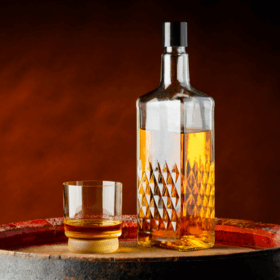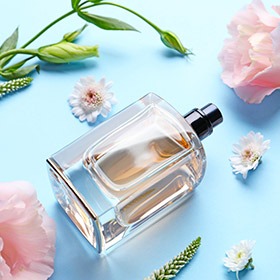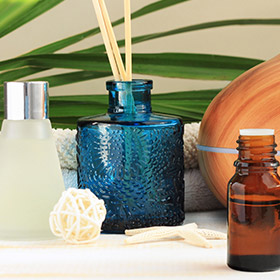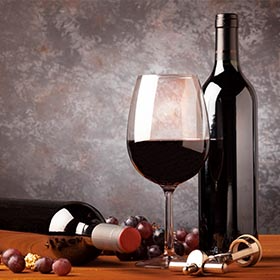If you’ve ever stood in front of a shelf of soda bottles, staring at the lineup of bottles from short and stubby to tall and lean, you’ve probably wondered: just how tall are soda bottles, anyway? It sounds like a strange and weried question. But for retailers, wholesalers, distributors, and beverage brands, bottle height is not just a matter of inches — it’s a matter of logistics, branding, and profitability. One extra half-inch could mean fewer bottles per pallet, a headache on your filling line, or even a customer who picks your competitor’s soda just because it looked taller and sleeker on the shelf.
This comprehensive guide delves into the multifaceted height of soda bottle, exploring how height influences everything from shelf space optimization to supply chain logistics and consumer perception. For professionals in the glass packaging sector, understanding these nuances is not merely an academic exercise but a strategic imperative for optimizing operations and enhancing market positioning. So, let’s check out how tall are soda bottles indeed?

The Anatomy of a Soda Bottle: Key Dimensions and Their Variations
Standard Capacities and Corresponding Heights
Soda bottles are produced in a variety of standard capacities to cater to diverse consumer needs and market segments. These capacities directly correlate with the bottle’s overall height, a crucial factor for storage, transportation, and retail display. While exact dimensions can vary slightly between manufacturers and designs, general ranges can be established based on common industry practices.
For example, smaller capacities such as 8 oz (approximately 240 ml) and 12 oz (approximately 355 ml) glass bottles are popular for single servings and often found in multi-packs. A typical 12 oz glass soda bottle, a staple in many markets, generally stands around 9 inches (22.86 cm) tall. This size is often associated with classic soda brands and premium offerings, emphasizing portability and individual consumption.
For the 16.9 oz (500 ml) bottle, is commonly seen in both glass and PET, offers a more substantial single serving. While specific heights vary, a 16.9 oz PET soda bottle can be around 8 inches (20.3 cm) tall. While the 20 oz (approximately 600 ml) bottle is another popular option, common in vending machines. It’s usually 8.5–9 inches in PET and a touch shorter in glass.
For family-sized consumption, 1 Liter and 2 Liter big soda bottles dominate the market. The 2 Liter bottle, a ubiquitous presence in households globally, typically measures between 12 to 13 inches (30.48 to 33.02 cm) in height, with a common dimension cited as 12.4 inches (31.5 cm). These larger formats are designed for economy and shared consumption, and their height is a significant consideration for refrigerator storage and pantry organization.
These standard dimensions are not arbitrary; they are the result of extensive research into consumer habits, retail environments, and logistical constraints. The precise height of each capacity is optimized to balance liquid volume with ergonomic handling, visual appeal, and efficient use of space throughout the supply chain.
Material Matters: Glass vs. PET Bottle Dimensions
An interesting thing, material will affect the soda bottle size. Glass soda bottles are usually shorter but heavier, given the need for thicker walls to maintain structural integrity under carbonation pressure. PET bottles, conversely, can achieve similar capacities with taller but slimmer designs.
Glass, renowned for its inertness, premium feel, and recyclability, often results in bottles with thicker walls and a more rigid structure. This inherent strength allows for greater design flexibility in terms of shape and embossing, but it also contributes to a heavier package. While glass bottles can be designed to be slender, their structural integrity often necessitates a certain base diameter relative to their height to prevent tipping and ensure stability on bottling lines and retail shelves.
PET plastic, on the other hand, offers unparalleled lightness, shatter resistance, and design versatility. The flexibility of PET allows for thinner walls and more intricate shapes, often enabling manufacturers to optimize for space efficiency. PET bottles can be designed with features like grip areas and unique contours that might be more challenging or costly to achieve with glass. The inherent lightness of PET also means that for the same volume, a PET bottle will be significantly lighter than a glass bottle, which has profound implications for shipping costs and environmental footprint.
Neck Finishes, Diameters, and Their Impact on Overall Height
The neck finish—the top section where caps or closures are applied—also adds to bottle height. For example, a crown-finish glass pop bottle might add 0.5–0.7 inches beyond the main body height. Similarly, larger neck diameters for glass juice containers or wide-mouth soda bottles increase closure height, influencing carton and pallet configurations.
For soda bottles, crown finishes are common for traditional glass bottles, while continuous thread finishes are prevalent for both glass and PET bottles that use screw caps. The diameter of the neck opening also influences the design of the bottle’s shoulder and, consequently, its overall height. A wider neck might necessitate a broader shoulder, which can affect the bottle’s perceived and actual height. These seemingly minor details are meticulously engineered to ensure optimal performance on high-speed bottling lines, where precision and consistency are paramount for efficient filling and capping processes.
Industry Standards and Regulatory Compliance: Navigating the Landscape
Global and Regional Packaging Standards
The world of soda isn’t just fun and fizzy — it’s regulated. In international trade, bottle dimensions must comply with both global and regional standards. The International Society of Beverage Technologists (ISBT) sets recommended dimensions, while regions like the U.S. and EU impose their own guidelines. For wholesalers dealing in glass soda bottles wholesale or wholesale beverage bottles, alignment with these standards ensures seamless export and import compliance.
The Role of Bottling Lines and Equipment Compatibility
The height of a soda bottle is a critical factor in the efficiency and compatibility of high-speed bottling lines. Modern bottling operations are highly automated, relying on precise measurements and consistent bottle dimensions to ensure seamless movement through various stages: washing, filling, capping, labeling, and packaging. Any deviation in bottle height can lead to significant operational disruptions, including jams, spills, and equipment damage.
Furthermore, the transition between different bottle sizes on a single production line requires changeover procedures, which can be time-consuming and impact overall throughput.
Ensuring Product Integrity and Shelf Stability
Height also impacts a bottle’s center of gravity. Taller bottles can become unstable on shelves, particularly when filled with carbonated beverages. The structural design of a bottle, including its height-to-diameter ratio, directly influences its resistance to external pressures, impacts, and temperature fluctuations. For big soda bottles like the 2L format, manufacturers must balance height with stability to prevent tipping, both on store shelves and in consumer use.
How Bottle Height Influences Business Decisions
Retail Shelf Space Optimization and Visual Merchandising
In the competitive retail environment, shelf space is a premium commodity. The height of a soda bottle directly impacts how many units can be displayed vertically on a shelf, influencing inventory capacity and visual merchandising strategies. Retailers meticulously plan shelf layouts to maximize product visibility and sales per square foot. Taller bottles, while potentially commanding more attention, can limit the number of facings or tiers on a shelf, potentially reducing overall product density. Conversely, shorter, wider bottles might allow for more units per shelf, but could be perceived as less premium or harder to spot.
Visual merchandising also heavily relies on bottle height. A consistent and aesthetically pleasing arrangement of products can significantly influence consumer purchasing decisions. Brands often design their bottles to create a distinctive silhouette that stands out on the shelf. The height of a bottle contributes to this visual identity, affecting how it interacts with neighboring products and the overall shelf appeal. For example, a slender, tall glass soda bottle might convey elegance and premium quality, while a shorter, sturdier bottle could suggest robustness and value. The interplay between bottle height and shelf dimensions dictates the optimal presentation, ensuring that products are not only visible but also accessible and appealing to the consumer.

Logistics and Supply Chain Efficiencies
Ever tried squeezing tall bottles into warehouse racks? Wasted space everywhere. When bottles are just a little too tall, shelves don’t line up right, and suddenly you’re paying for air instead of inventory. On the flip side, when bottle heights are optimized, storage gets tighter, neater, and way more cost-effective.
The same story plays out in transportation. Standard pallets and trucks only allow so much height, and if your bottles stretch past that limit, you lose stackability fast. Fewer layers per pallet mean fewer bottles on the truck, which means higher freight costs per unit. Even a fraction of an inch off can cut into margins when you’re moving thousands of cases. That’s why smart packaging design isn’t just about looks—it’s about maximizing cube utilization so every inch of space is working for you, not against you.
Consumer Perception and Brand Identity
Ever noticed how a taller bottle somehow feels like it holds more—even if it doesn’t? That’s not your imagination; studies show consumers often perceive slender, taller bottles as more generous, which can make them believe they’re getting better value for their money. It’s a subtle design trick that can boost how your product is viewed on the shelf.
Bottle height also speaks volumes about brand identity. A sleek, tall silhouette gives off premium, sophisticated vibes—perfect for craft sodas or specialty beverages. On the other hand, a shorter, stockier bottle feels dependable and traditional, which is why it’s a go-to for mainstream soda brands. The profile alone becomes part of the brand’s signature look, helping it stand out in a crowded market.
And let’s not forget ergonomics. If a bottle is too tall, it’s awkward to pour or store in the fridge. Too short, and it feels unsubstantial in the hand. The best designs balance aesthetics with real-world functionality—easy to hold, easy to store, and just right for the customer’s daily use.
Why Roetell Glass Excels in Bottle Manufacturing
In an industry where precision, quality, and innovation are essential, Roetell Glass is a leading manufacturer of premium glass packaging solutions. With decades of experience producing glass soda bottles, we meet the diverse demands of the beverage industry.
Our commitment to excellence ensures that bottle height and dimensions are more than specifications—they impact every stage of the product lifecycle. From smooth integration with high-speed bottling lines to optimized retail display, our precision-engineered bottles help brands operate efficiently and impress consumers.
Roetell Glass offers a wide range of empty glass bottles for sale, including glass juice containers and glass pop bottles, as well as custom designs. Brands can create unique bottle shapes and heights to enhance identity and stand out on crowded shelves. Whether standard 12 oz bottles, larger 1-Liter or 2-Liter sizes, or fully bespoke designs, our engineering team ensures the right balance of form, function, and cost-effectiveness.
Sustainability is central to our operations. Glass is infinitely recyclable, and partnering with Roetell Glass supports a circular economy while protecting product integrity. Our wholesale beverage bottles and glass bottles wholesale programs provide reliable, cost-efficient solutions for distributors and wholesalers.
More than a supplier, Roetell Glass is a strategic partner. Our industry knowledge and advanced manufacturing capabilities deliver packaging solutions that are visually striking, functionally superior, and strategically advantageous. From shelf optimization to logistics and consumer perception, our glass soda bottles help brands succeed with quality, consistency, and innovation.




Conclusion
It might seem like a small detail, but the height of a soda bottle can make a big difference in beverage packaging. From production line efficiency to shelf display, shipping, and even consumer perception, bottle height affects every step of the value chain.
Understanding how standard capacities, material choices, and international standards play a role helps wholesalers, retailers, and distributors make smarter, more profitable decisions.
At Roetell Glass, we focus on crafting glass soda bottles wholesale, empty glass soda bottles, and a full range of wholesale beverage bottles designed for both quality and style. Working with us means your packaging isn’t just functional—it’s a tool that helps your brand stand out.
With Roetell Glass, your bottles do more than hold beverages—they shape the future of your brand, one perfectly designed bottle at a time.






